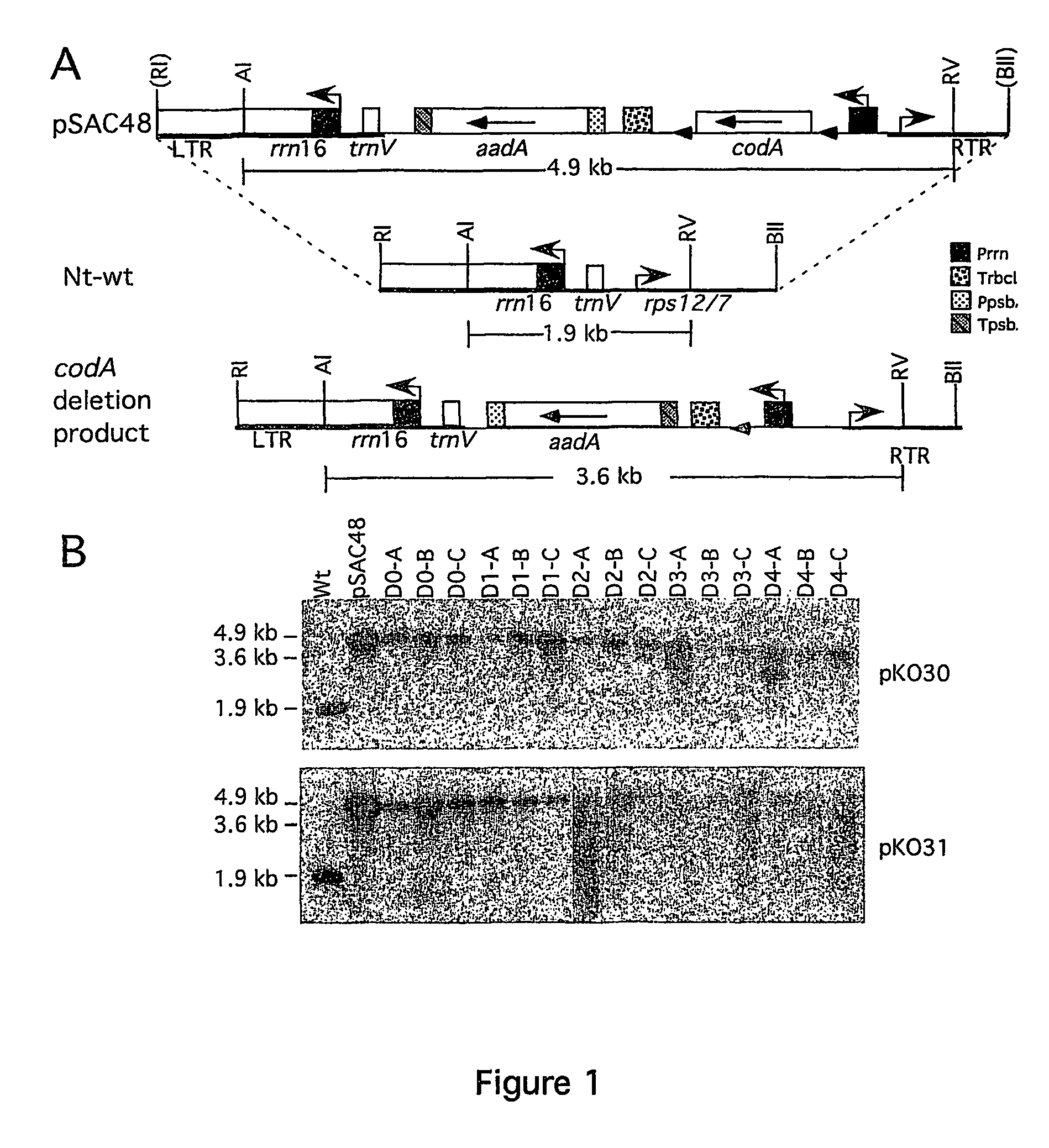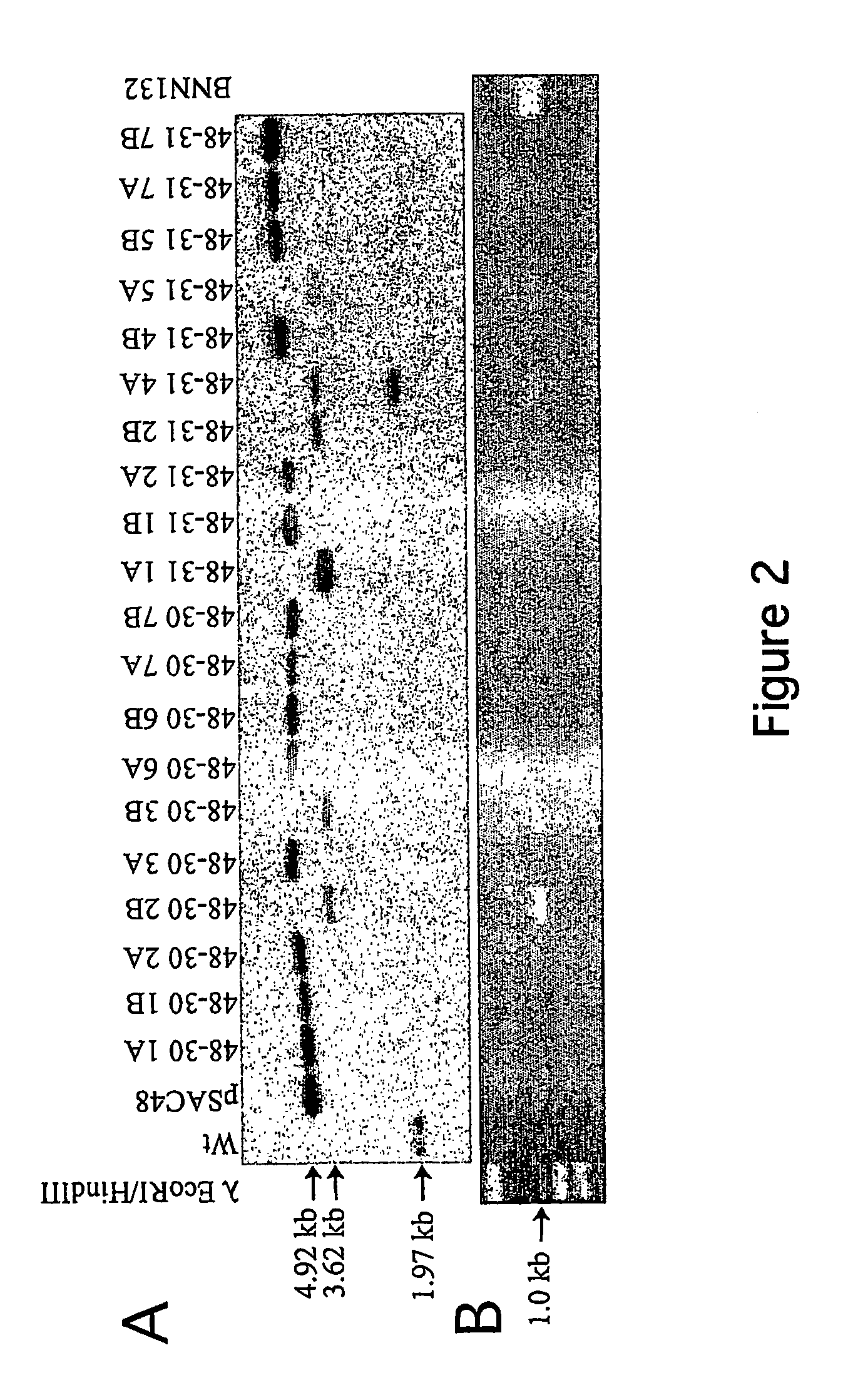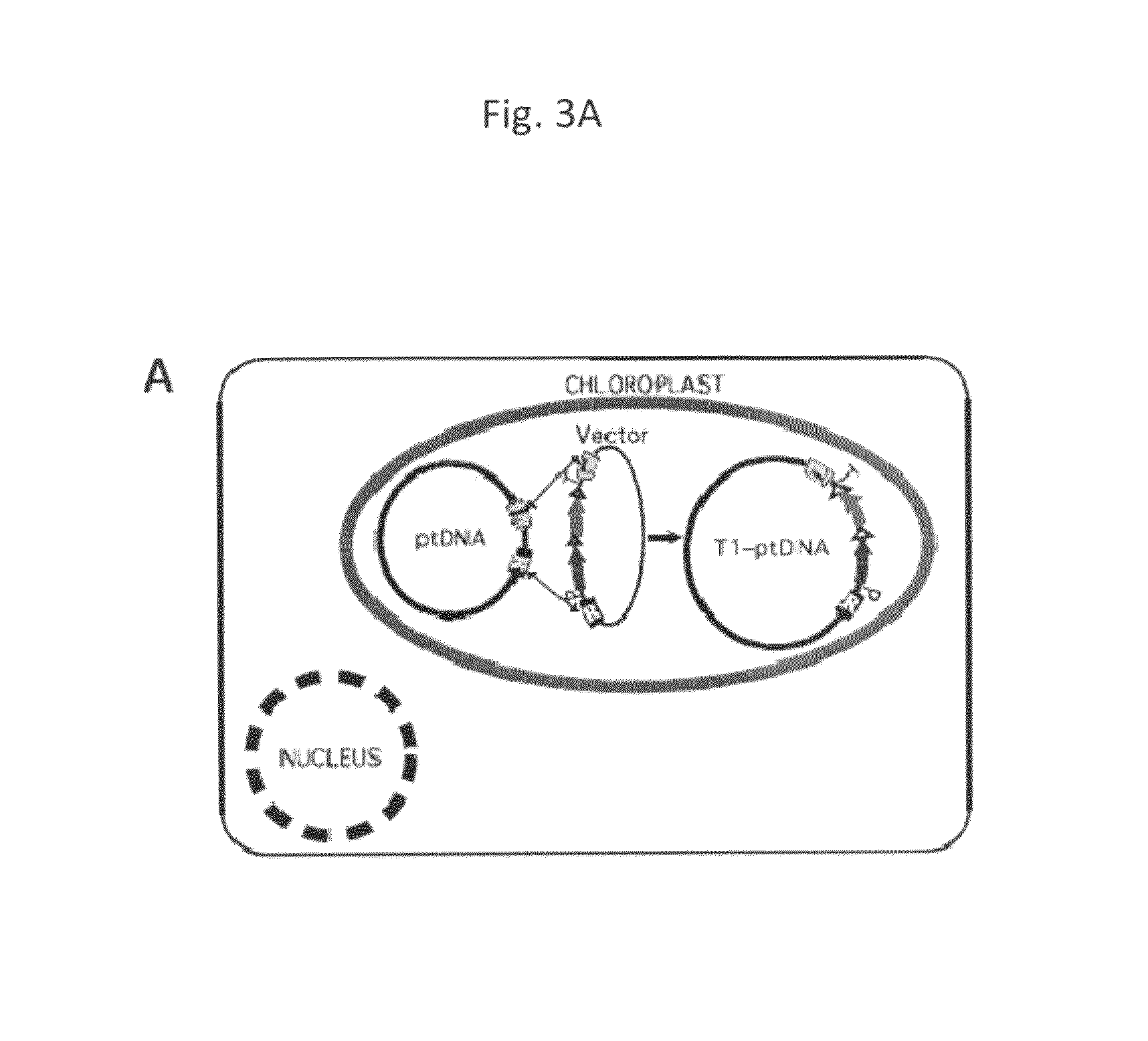Removal of plastid sequences by transiently expressed site-specific recombinases
a site-specific recombinase and plastid technology, applied in the field ofmolecular biology and transgenic plants, can solve the problems of loss of expression of this protein, and achieve the effect of facilitating the manipulation of the plastid genom
- Summary
- Abstract
- Description
- Claims
- Application Information
AI Technical Summary
Benefits of technology
Problems solved by technology
Method used
Image
Examples
example i
Removal of codA from the Plastid Genome by Agroinfiltration
[0061]The previously described CRE-loxP test system has two components: a plastid tester strain carrying a cytosine deaminase (codA) transgene flanked by lox sites (floxed) conferring sensitivity to 5-fluorocytosine (Nt-pSAC48 plant line) and a nuclear CRE line carrying a nuclear-encoded, plastid-targeted CRE (Nt-Cre1-100 and Nt-Cre2-300). Both the plastid tester (no CRE activity) and the nuclear CRE line (no lox sequence) were genetically stable. However, codA was eliminated at a very fast rate when the plastid-targeted CRE was introduced into the plastid tester strain by transformation or crossing. The gene for the nuclear-encoded CRE was subsequently separated from the transformed plastids by segregation in the seed progeny. This approach, i.e., removal of plastid sequences by CRE expressed from a stably integrated gene has been described in PCT / US00 / 25930 and in Corneille et al., 2001. This PCT application also provides ...
example ii
Transiently Expressed Cre Yields Herbicide Resistant Transplastomic Tobacco Plants Free of Selectable Markers
[0067]Construction of transplastomic herbicide resistant tobacco plants utilizing transient expression of recombinase is described in the present example. To test the efficiency of plastid marker gene excision with transiently expressed CRE, additional vectors were constructed which encode an herbicide resistance (bar) and a spectinomycin resistance (aadA) gene expressed from a single promoter by cloning a promoter-bar fragment into a promoter-less aadA / lox vector (pPAL1; FIG. 3B). The bar gene confers herbicide (phosphinothricin or PPT) resistance when the majority of ptDNA copies have been transformed, but is not suitable for direct selection of transplastomic clones when present in only a few of the 1,000 to 10,000 genome copies in a cell (Lutz et al., 2001; Ye et al., 2003). Linking bar to spectinomycin resistance (aadA) ensured efficient selection of transplastomic clone...
example iii
Excision of Marker Genes by a Transiently Expressed phiC31 Phage Site-Specific Integrase (INT)
[0074]In addition to CRE-loxP, there are many site-specific recombination systems, which are suitable for the excision of plastid marker genes (Smith and Thorpe, 2002). One of these is the phiC31 phage integrase (INT), which mediates recombination between bacterial attB and phage attP sequences. The minimal sequences for attB and attP function were defined to be 34 and 39 bp, respectively (Groth et al., 2000). In mammalian cells longer sequences were more efficient. Therefore, in tobacco plastids, a 55-bp attB site was incorporated in the plastid genome to facilitate INT-mediated insertion of a vector carrying a 217-bp attP sequence (Lutz et al., 2004).
[0075]Molecular reactions carried out by the recombinase depend on the orientation and location (cis or trans) of target sequences. If the marker gene is flanked by directly orientated attB and attP target sites (atted), INT mediates excision...
PUM
| Property | Measurement | Unit |
|---|---|---|
| time | aaaaa | aaaaa |
| resistance | aaaaa | aaaaa |
| antibiotic resistance | aaaaa | aaaaa |
Abstract
Description
Claims
Application Information
 Login to View More
Login to View More - R&D
- Intellectual Property
- Life Sciences
- Materials
- Tech Scout
- Unparalleled Data Quality
- Higher Quality Content
- 60% Fewer Hallucinations
Browse by: Latest US Patents, China's latest patents, Technical Efficacy Thesaurus, Application Domain, Technology Topic, Popular Technical Reports.
© 2025 PatSnap. All rights reserved.Legal|Privacy policy|Modern Slavery Act Transparency Statement|Sitemap|About US| Contact US: help@patsnap.com



